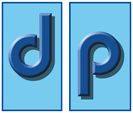UK Print Industry Performance and Productivity 2013 to 2017
The UK print industry can be described as a bellweather for the economy as a whole because demand is derived from the level of overall activity. Therefore, if the UK economic growth figures are stagnant or the economy has contracted, the print industry is likely to mirror the macro national performance. The industry serves all aspects of the economy which are:- central and local government, manufacturing, travel and tourism, retail, distribution and financial services. In 2013 the print industry generated around £14.5 billion in sales and approximately £7 billion in gross value added. Books, advertising brochures and leaflets made up the vast majority of the print products produced. Between the years 2008 and 2013 the industry went through a drastic period of consolidation and employee numbers fell by roughly 20%. The number of companies operating in the industry also fell by roughly 15%. By 2013 the industry utilised approximately 140,000 employees in around 10,500 companies spread throughout the UK. 90% of firms employed fewer than 20 workers and 75% of firms employed less than 10 people. Whilst only 0.5% of companies employed more than 250 people this did account for at least 25% of industry turnover which does indicate significant ‘economies of scale’ advantages for the biggest firms.
2015
Within 2 years the industry turnover dropped by approximately £1 billion from £14.5 billion to £13.5 billion. The number of people employed dropped from 130,000 to 122,000 and the total number of firms operating to 10,500 to 8,600. GVA (Gross Value Added) from £7 billion to £6.1 billion.
2017
It is significant that although the number of employees within the industry continues to reduce (116,000 in 2017 compared to 122,000 in 2015) and the number of firms operating follow a similar pattern (8,400 in 2017 compared to 8,600 in 20115). However, sales turnover has actually increased from £13.56 billion to £13.8 over the last two years.
The GVA has continued to drop which suggests significant improvements in productivity, probably in the shape of investment and training as well as technology and process improvements. This reveals that the print industry has outperformed most of the other sectors of the UK economy which continues to disappoint with sluggish productivity performance figures.
In is notable that total sales turnover has increased over the last couple of years in the face of a growing threat of substitutes. This has come via the grow of e-readers and tablets and digital advertising via the internet. Industry rivalry has intensified over the last five years and this has led to a further drop of approximately 20% of the total printing firms exiting the industry. The firms which have survived have done so by achieving a sustainable competitive advantage. This can be described as an evolutionary processed comparable with Darwin’s ‘Survival of the fittest’ theory of the natural world.
The market is a ruthless force of nature and those firms not best fit for the current economic environment have not survived. It can be explained as being adopted by the market in this new era rather than adapting to it. Inefficient organisations, managers and projects are ruthlessly rooted out and discarded. Difference between operating standards of competing printing firms are amplified as the market gives feedback in what has become a far more competitive economic environment.
The print industry can be described as operating in a structure of ‘perfect competition’. This means there are many firms with insignificant barriers of entry and exit provided the necessary investment can be sourced. There is not much product differentiation, homogenous product is produced by many firms and there are no impediments regarding the flow of information which comes from market demand.
Competition from substitutes mentioned above means that demand is elastic with respect to price. This means consumers are sensitive to price and may well choose a substitute product if they feel that they are paying too much. As the industry has become more concentrated in recent years with less firms operating, the power printing firms possess as buyers of raw materials has increased. At the same time, the power possessed by printing firms as suppliers has also increased.
Those firms operating at a loss as they desperately cling to survival generating sales at prices which were to low have now exited the industry to a large extent. Those who survived are not so desperate for customers at any cost, in current times. The industry is now operating in a more stable and pragmatic fashion.
So therefore over the last five years the print industry has undergone substantial changes regarding the amount of employees and firms operating which have continued to drop. However, total sales generated have been steadily increasing since 2015. This indicates that the industry is leaner and fitter. Organisations are operating with increasing management competency. Training appears to have improved and technological advances have enabled wise capital investment decisions. Productivity is on the increase and there is growing evidence of gaining competitive advantage through ‘economies of scale’. This may prove challenging for the smaller firms over the next years. Though it must be noted that the vast majority of printing firms are still small businesses and have proven themselves robust and resilient in the face of very turbulent economic times.
Blog by Simon Jones








Leave A Comment